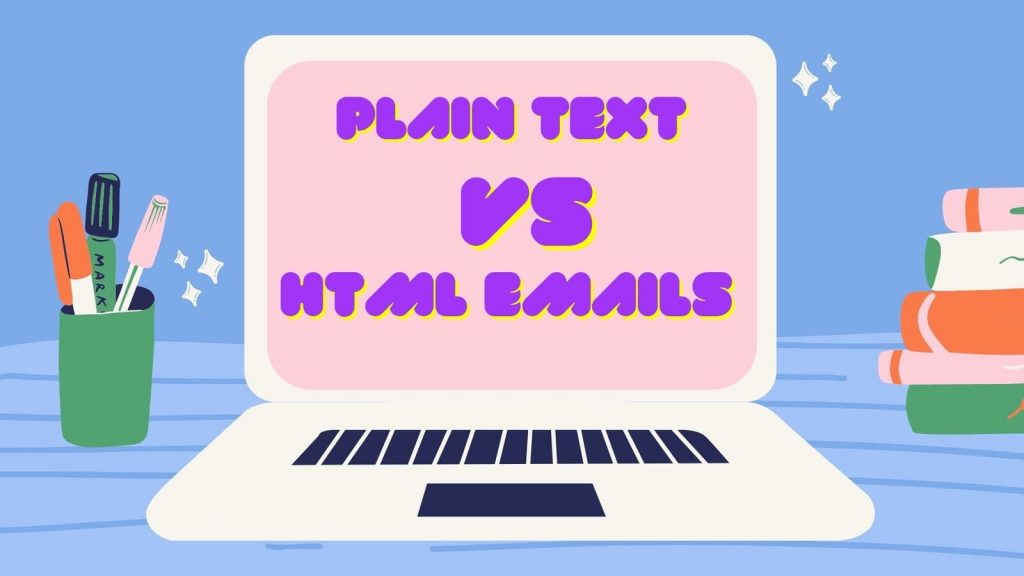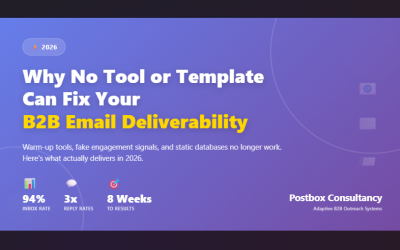Plain text vs HTML Emails | Which one should I use?
Author : Veethee Dixit
Plain text vs HTML emails
Plain text vs HTML emails is an ongoing debate and a never-ending one. While not all email marketers can agree on one way, they can certainly be on the same page when the end goal is improving clicks, opens, and conversions. Email marketers go to great lengths for tweaking and refining headers, subject lines, call to action, general layout link positioning, and so on. But having a detailed understanding of choosing between HTML and plain text emails is a must for a consistent user experience, deliverability, and customer satisfaction.
In this post, we are going to take a look at plain text email and HTML email in detail before deciding which one to use. We are also going to expand on the pros and cons of both so that email marketers can make an informed decision. Let’s dive into the details.

What are plain text emails?
Just like the name implies, plain text emails are are simple text you can’t format to make it stand out. Marketers can’t embed links, images, media, or CTA. Of course, the CTA can be in the form of the last sentence of your email copy. You also can not apply any colors to your email copy.
What are HTML emails ?
The type of emails that allow email marketers to deliver videos images, links, colors, diagrams, reports, products, and so on in an appealing form are called HTML emails. In short, they offer everything that plain text emails don’t. Marketers can add as many visual and interactive emails as they want.
How are plain text emails beneficial?
Unlike HTML emails, there won’t be any rendering issues on different email clients when you are using plain text emails. This ensures delivery consistency and accessibility, better personalization, quick loading time, and fewer chances of the email landing in the spam folder.
How are HTML emails beneficial?
An improved tracking ability along with unlimited formatting options are the biggest reasons why some marketers are always inclined towards HTML emails. They bring life to everything inside an email especially the CTA. Since the appearance of an HTML email is well designed, conversion rates are usually better. Moreover, since human beings are wired to be enticed by visual beauty, this principle applies to email marketing as well.
Different parameters of comparison for plain text vs. HTML emails
Here are some important parameters which we are going to take a look at in detail to understand how each works for both types of emails.
1. Process of creation
The process of creating a plain text email is faster and more efficient. On the other hand, creating HTML emails requires some coding knowledge. So, it looks like the creation process for plain text emails is easier. However, if we take into account the copy of an email, if it’s not up to the mark plain text emails don’t hold any value. On the other hand, email marketers don’t have to worry much about the copy of HTML emails due to their visual appeal.
2. Accessibility and analytics
The accessibility of HTML emails is lower than plain text ones. For instance, the HTML ones won’t be of any use to a visually impaired person. Someone can easily read out plain text emails to them. Moreover, plain text emails usually directly go into the inbox. Most email clients take into account the number of links and images as deciding factors about where an email should go. On the other hand, if your HTML email is appealing enough, it increases the chances for conversions. As for analytics, HTML emails is the clear winner as it’s easy to track.
3. Open rate, engagement, and interactivity

Open rate is not precisely a compatible parameter as users don’t know whether it’s a plain text or HTML email before opening. Once they have opened an email, HTML emails increase user engagement and interactivity, thanks to a noticeable call to action along with embedded media. But if you have a compelling copy, you can instigate higher interactivity as well as user engagement from plain text email itself.
Important statistics about plain text versus HTML emails
According to some A/B tests by hubspot, adding GIFs decrease the open rate by 37%. An HTML template had 25% lower opens. But when they performed a comparison between a simple HTML template and a heavy one, the simpler email had a higher click-through rate of 5.3%. It also had a higher open rate which led to 30% more clicks.
Final Words- Which One Should You Use?
By now, it’s clear that both formats have their own pros and cons. Plain text emails are free of distractions, less time-consuming and the subscriber can read without any distractions. On the other hand, HTML emails can be extremely attention-catching which can boost conversion rates more than you can imagine.
While we marketers have an innate drive to be creative, ‘the less is more’ policy can be a tough pill to swallow. What you should opt for your business depends on the type of business and your brand image. For instance, if you have an eCommerce store, users are likely to expect visuals that require HTML-rich emails. On the other hand, if you use plain text emails for other niches, it forces marketers to be creative with copy link placement, positioning, and subject line to increase open and click-through rates.
The best way to go is to use a combination of plain text and HTML emails in your email marketing campaigns. You also need to continuously perform testing in different situations such as plain text versus GIFs, light HTML, heavy HTML, low and high image count, and other similar combinations.
This will help you gain a deeper insight into how your audience is responding to various types of emails. Another great way is to follow up with a brief survey to understand their likes and dislikes. In the end, combine the data, understand what your audience likes, improvise and incorporate changes accordingly. You are good to go!

Author : Veethee is a Computer Science Engineer by degree and a passionate writer by choice. The credit for her profession as a web content writer goes to the knack for writing combined with a technical background. She believes in utilising her skills to spread awareness and simplify people’s lives with her writing! When she is not busy playing the game of words, she likes to indulge herself in hobbies like reading and hitting the gym.




